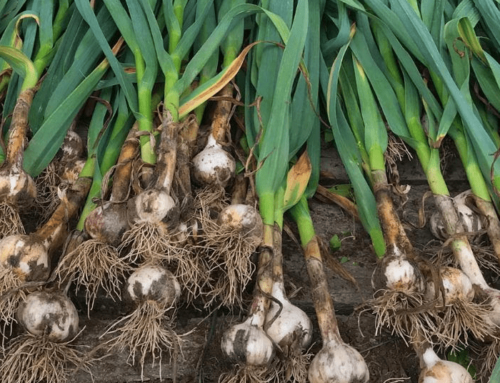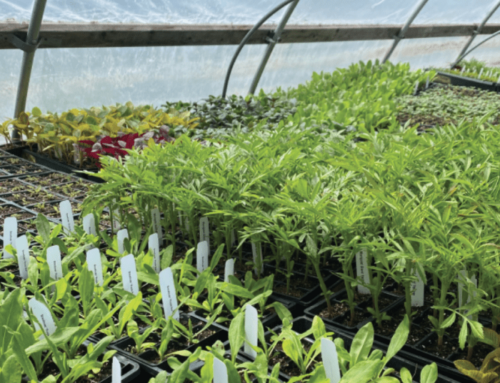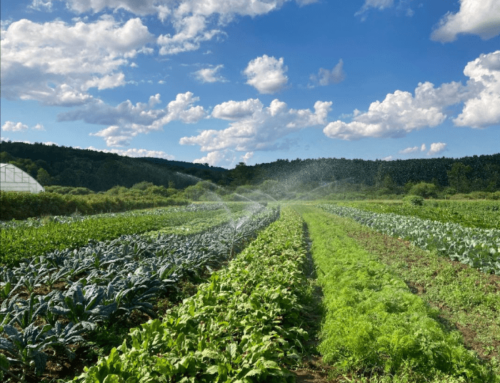By Richard Robinson, Farmer at Hopestill Farm [email protected]

When I started gardening, I thought everything got planted only once; when it was harvested, you waited until next year to get more. But over time I learned nothing could be further from the truth—with succession planting, you can reap multiple harvests of the same crop all season long.
Lettuce is perhaps the premier crop in this regard. There is no reason that home gardeners can’t have fresh lettuce on the table every week of the season, and no reason market gardeners can’t sell lettuce at the farm stand from March to December. All it takes is a plan, the right varieties, and keeping at it.
For gardeners without a hoop house, lettuce can be started indoors in mid-February, and transplanted into the soil in mid-March, protected by a couple layers of row cover or one layer of greenhouse plastic over low hoops. (If you are growing in a hoop house, you can easily subtract a month from these dates.) If you are growing outdoors, it is best to warm the soil a bit first by covering with black plastic, or setting up the hoops with greenhouse plastic, a couple weeks before transplanting.

Lettuce is the premier crop choice for succession planting
Now comes the succession. Two weeks after you start the first crop, start the next one. After three weeks indoors, transplant it out. Repeat all season long, at two-to-three week intervals. Your first crop will probably be about ready to harvest just as the third one is going in, freeing up space for either the third or fourth successive planting. Add a little compost and plant right into that newly opened space.
As the season progresses, the rate of growth will change; factoring this into your succession plan can be challenging but fun. In the cold spring months, lettuce will grow slowly, so you may want to harvest heads when they are still small, rather than wait a couple more weeks while they size up. That’s especially so because later plantings will grow faster, and will likely catch up to those earlier ones if you leave them. At the other end of the season, you may want to plant more frequently, since each successive crop will take longer and longer to mature as the days grow shorter and cooler.
I keep my lettuce under row cover from the day it’s transplanted, in every season, including summer. As long as it has access to copious water, it will transpire to keep itself cool, and the row cover keeps the leaves clean.
A word about lettuce in summer: Lettuce has a reputation, entirely undeserved, for not being a good summer crop. In fact, excellent lettuce can be had all summer long, as long as you keep it liberally supplied with water. In my garden, I want the soil to look moist every day, around the clock. I use some mulch on lettuce, but mostly I rely on frequent watering with drip irrigation (which I’ll write about in next month’s column).
There are a mind-boggling number of lettuce varieties, and I’ve tried only a relative handful. Here are the ones I recommend for ten months of lettuce harvest:
Winter Density: a green mini-romaine, very cold hardy, very delicious.

Outredgeous: a red romaine, gonzo color, somewhat cold hardy, fast grower.
Black-seeded Simpson: a green loose leaf, very fast grower, bolts quickly so only for cooler weather. Makes a nice pairing with Outredgeous.
Concept: a green loose leaf, three-season champion, very delicious.
New Red Fire: a red loose leaf, heat tolerant, good taste.
I am still looking for a real over-wintering lettuce, one that can be planted in the hoop house in the fall and harvested in late winter. The only one I have found that survives is a green deer tongue, but after too many cold nights, it loses its taste and becomes tough and bitter. Suggestions welcome.





